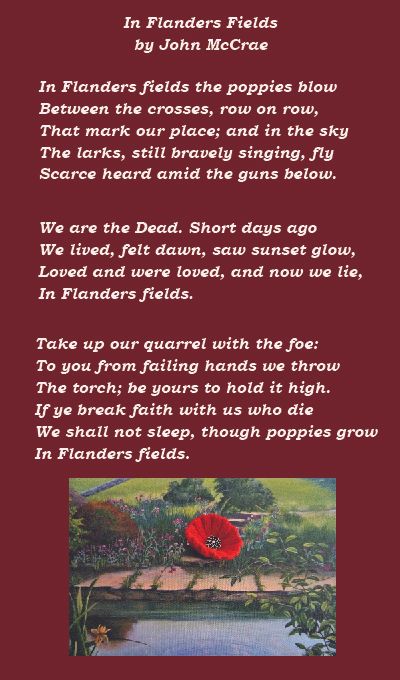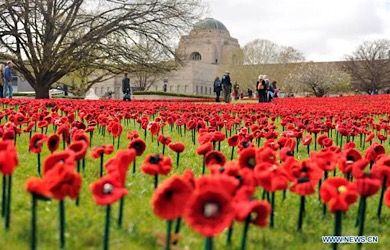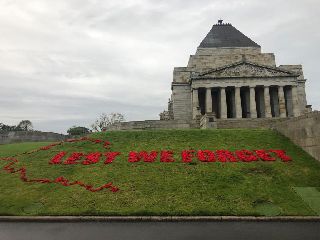Remembrance Day 2018
One hundred years ago at the 11th hour of the 11th day of the 11th month, World War 1 officially ended when the armistice was signed between the Allies of World War I and Germany at Compiègne, France, for the cessation of hostilities on the Western Front of World War I.
Today we wear a red poppy to remember all people from all countries around the world who have suffered because of conflict.
Why a red poppy?
Canadian Colonel John McCrae first described the Red Poppy, the Flanders’ poppy, as the flower of remembrance.
Whilst serving in the First World War, one death in particular affected the then Major McCrae. A young friend and former student, Lieutenant Alexis Helmer of Ottawa, was killed on 2 May. He was buried in the cemetery outside McCrae's dressing station, and McCrae had performed the funeral ceremony in the absence of the chaplain. McCrae vented his anguish by composing a poem. At the second battle of Ypres in 1915, when in charge of a small first-aid post, he wrote in pencil on a page from his despatch book, a poem that has come to be known as 'Flanders' Field' which described the poppies that marked the graves of soldiers killed fighting for their country. (army.gov.au)

Around the world knitted and crocheted poppies are being made to form Memorial Installations. Here in Australia 62,000 poppies have been made in memory of the Australian soldiers who died in World War 1. They have been arranged in a carpet around the Australian War Memorial.

(Credit: www.xinhuanet.com)
Read the remarkable story behind the knitted poppies.

Credit: The Hero Image today features a wonderful photo taken by Alan Ranger at Blackstone Farm nature reserve in Bewdley, Worcestershire, UK, 2012. The Daily Mail has published several of Alan Ranger photographs of poppies.
